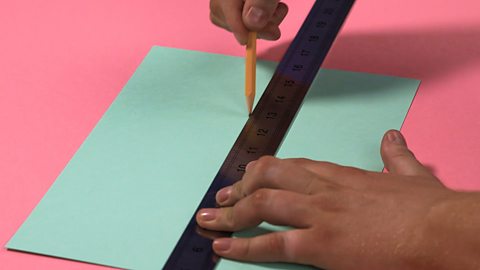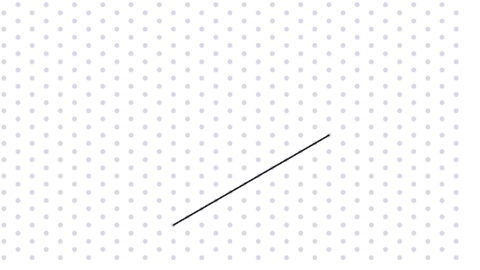3D solid shapes
Here are some common solid shapes.
Prisms
A prism is a 3D shape which has a constant cross section - both ends of the solid are the same shape and anywhere you cut parallel to these ends will give you the same shape.
For example, in the prism below, the cross section is a hexagon.
This is called a hexagonal prism.
Pyramids
A pyramid has sloping facesA plane surface of a geometric solid. A cube has 6 faces; a tetrahedron, 4 faces. that meet at a vertexThe point where two lines meet is called the vertex. In a 3D shape this is the corner point.
3D shapes have faces, edges and vertices
A face is a flat surface.
An edge is where two faces meet.
A vertex is a corner where edges meet.
The plural of vertex is vertices.
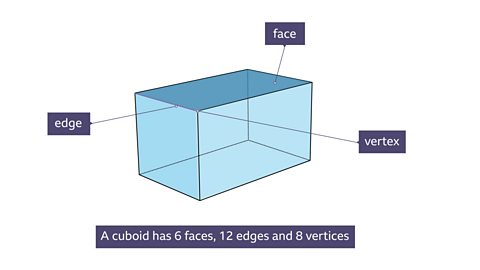
Faces, edges and vertices in common 3D shapes
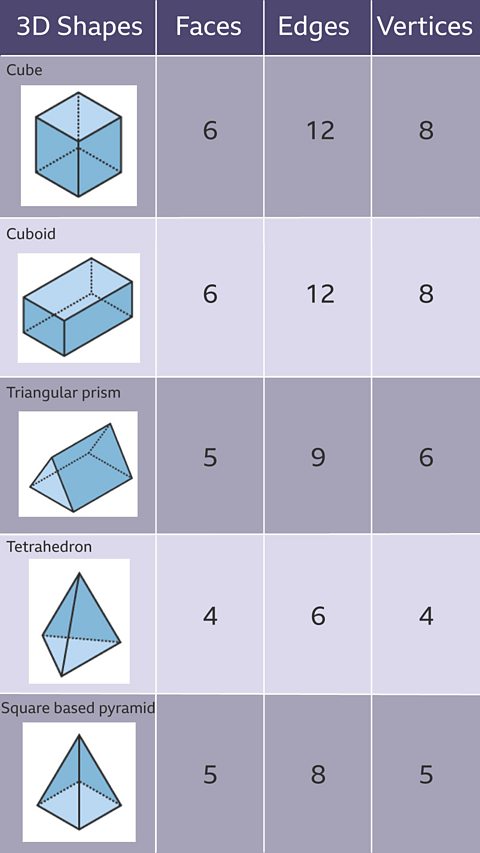
Example
How many faces, edges and vertices has an octagonal pyramid?
An octagonal pyramid has
\(9\) faces (\(8\) triangular and one octagonal face), \(16\) edges and \(9\) vertices.
Question
Many stones at the GiantβÄôs Causeway are hexagonal prisms.
How many faces, edges and vertices has a hexagonal prism?
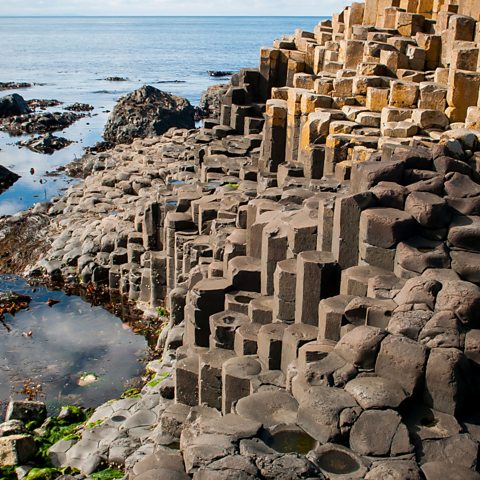
Answer
A hexagonal prism has \(8\) faces, \(18\) edges and \(12\) vertices.

Nets
Some 3D shapes, like cubes and pyramids, can be opened or unfolded along their edges to create a flat shape.
The unfolded shape is called the net of the solid.
Here are some 3D shapes and their nets.
3D shapes and their nets
1 of 3
Getting nets right
A net has to be able to fold up into the 3D shape.
All of the following shapes are nets of a cube.
Nets of a cube
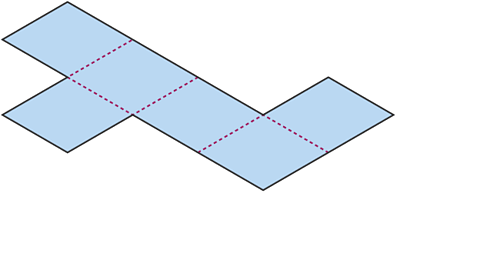
Image caption, Example 2
Image caption, Example 3
1 of 3
Getting nets wrong
The shapes below are not nets of cubes.
Consider why they wouldn't fold up into a cube?
False nets
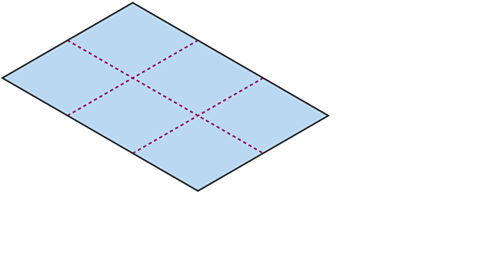
Image caption, Example 1 - this is not a net of a cube.
Image caption, Example 2 - this is not a net of a cube.
1 of 2
Drawing 3D shapes on isometric paper
You can use isometric paper to draw 3D shapes.
Remember to hold the isometric paper so that you can see vertical rows of dots.
This \({6}~cm\times{6}~cm\times{6}~cm\) cube has been drawn using the dots as guides.
The vertical lines are always vertical, but the horizontal lines are drawn at an angle, when drawn on isometric dotted paper.
You could get some isometric paper and draw the cube yourself.
Example
Use isometric paper to draw a cuboid with a length of \({11}~cm\), a width of \({6}~cm\) and a height of \({4}~cm\).
Click through the slideshow below to see how to draw a cuboid with these dimensions.
How to draw a cuboid
1 of 9
2D representation of 3D shapes
When architects design buildings, they often sketch 2D drawings to show what the building will look like from each side.
These drawings are called plans and elevations.
The view from the top is called the plan.
The view from the front and sides are called the elevations (front elevation and side elevation).
Test section
Question 1
What is the name of this 3D shape?
Answer
This shape is a cylinder
Question 2
What is the name of this 3D shape?
Answer
This is a square-based pyramid.
Question 3
How many faces does a triangular prism have?
Answer
A triangular prism has 5 faces.
Question 4
How many edges has a square based pyramid?
Answer
A square based pyramid has 8 edges.
Question 5
A cuboid hasβÄΠ
a) 6 faces, 12 edges and 8 vertices
b) 12 faces, 6 edges and 8 vertices
c) 6 faces, 6 edges and 6 vertices
Answer
a) A cuboid has 6 faces, 12 edges and 8 vertices.
Question 6
A pentagonal prism hasβÄΠ
a) 10 faces
b) 15 edges
c) 7 vertices
Answer
b) A pentagonal prism has 15 edges.
Question 7
Which of these is not the net of a cube?
a)
b)
c)
Answer
The correct answer is a).
a)
This is not the net of a cube.
Question 8
This is the net of which shape?
Answer
This is the net of a square-based pyramid.
Question 9
Which shape's side elevation cannot be a rectangle?
a) Triangular prism
b) Cuboid
c) Square-based pyramid
Answer
The side elevation of a square-based pyramid is always triangular, and so cannot be a rectangle.
The answer is c) Square-based pyramid.
Question 10
What are the dimensions of this cuboid?
Answer
Count the spaces between each dot for each dimension.
This is a \({4}~{cm}\times{6}~{cm}\times{11}~{cm}\) cuboid.
More on Shape, space and measures
Find out more by working through a topic
- count48 of 52
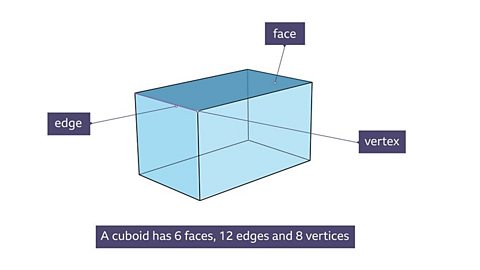
- count50 of 52

- count51 of 52
